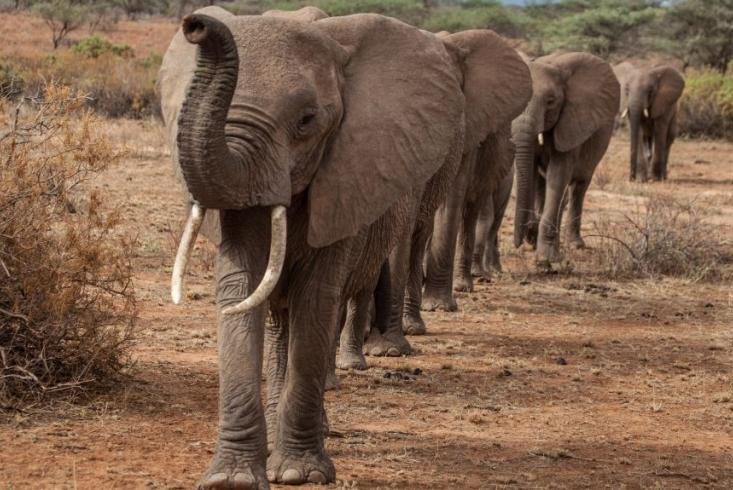Elephants walk faster and take straighter paths through dangerous territory. Photo by University of Oxford
June 13 (UPI) -- Elephants take more direct paths through territory frequented by poachers, according to new analysis by researchers in Europe and Africa.
A growing body of research suggests the threat of poachers has a significant effect on the behavior of elephants in Africa. Previous studies have shown elephants increase their walking speeds when traveling from one feeding location to another, especially when passing through particularly dangerous territory. Researchers have also observed elephants living in particularly dangerous places shifting their primary activity from day to night.
For the new study, scientists studied the movement of elephants through northern Kenya's Samburu-Laikipia ecosystem between 2004 and 2014, a time period that featured increasing levels of ivory poaching. GPS tracking data revealed the paths elephants took between national reserves, local conservancies and pockets of inter-tribal conflict, where poaching activity was more common.
Scientists used the tracking data to measure the "tortuosity" of an elephant's path-taking. Less tortuous paths feature greater speeds and fewer, smaller turns. Researchers looked at the tortuosity of an elephant's movements while inside and outside preferred feeding areas.
When walking through areas with high levels of poaching, elephants took faster, straighter paths, or less tortuous paths. As poaching levels increased over time, the data showed tortuosity declined.
"A reduction in path tortuosity implies reduced searching intensity per unit area, which in the long run might have negative implications in the foraging success of elephants in risky landscapes," Festus Ihwagi, a researcher with the non-profit group Save the Elephants, said in a news release. "Changes in path tortuosity can also serve as a useful proxy for changes in levels of illegal killing at the site level."
Ihwagi conducted the research while working toward his PhD at the University of Twente in the Netherlands. Ihwagi hopes the new data analysis techniques -- described this week in the Journal of Wildlife Management -- can help park rangers and wildlife managers identify changing threat levels. Park rangers already use GPS tracking to make decisions about where to deploy resources to thwart poachers.
"Elephants adapt to their landscape with great sensitivity," said Douglas-Hamilton, a zoologist at the University of Oxford and founder of Save the Elephants. "When the risk is high, they diminish their meandering in search of food and aim to get from one point to the next in safety. By better understanding the decisions that elephants make, we can understand their needs and so help secure their future."
Elephants remain threatened throughout Africa, and poaching is a persistent problem. Earlier this year in Botswana, officials agreed to legalize elephant hunting. It's likely GPS collars on elephants in the Southern African country will register a reduction in tortuosity in the years ahead.















